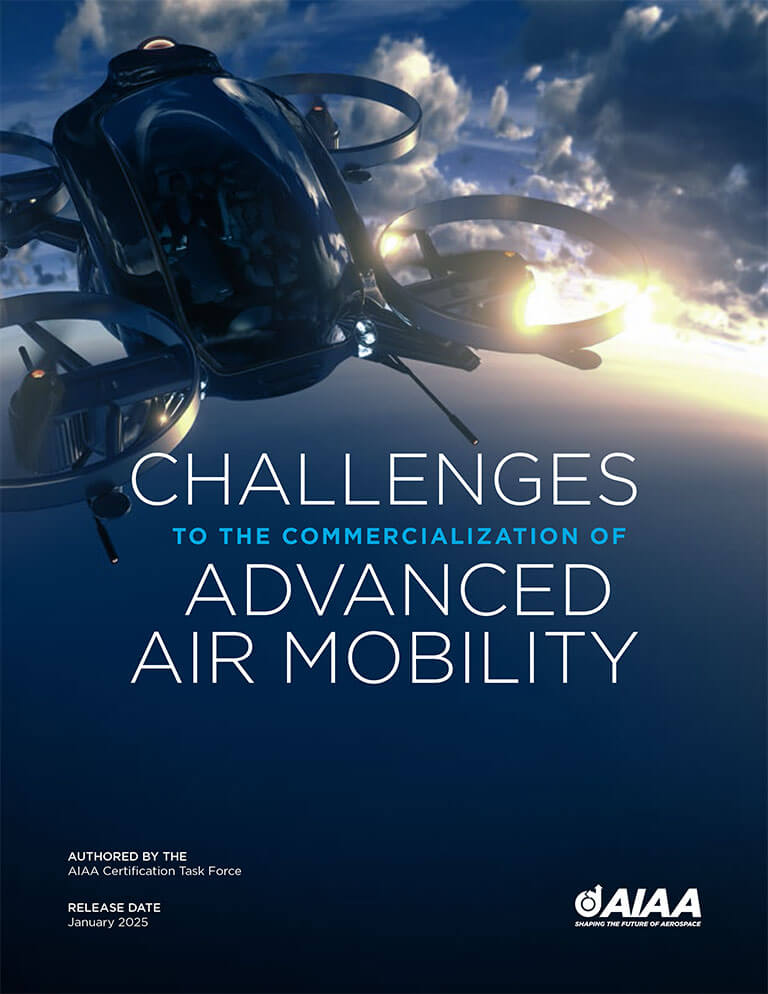This report by the AIAA Certification Task Force examines key challenges to commercializing Advanced Air Mobility (AAM). It covers air traffic management, novel technology certification, legal and policy implications, infrastructure gaps, and education/training needs. The report provides recommendations to address regulatory, technical, and operational hurdles for integrating AAM into the national airspace system and developing supporting infrastructure.
This comprehensive report by the AIAA Certification Task Force examines critical challenges to commercializing Advanced Air Mobility (AAM) and provides recommendations to address regulatory, technical, and operational hurdles. Key highlights include:
- Air Traffic Management:
The current FAA policy aims to adapt AAM with minimal disruption to existing operations, using a “crawl, walk, run” approach.
There’s a need for a networked air traffic management system to handle increased urban air traffic density efficiently.
The task force recommends AIAA facilitate a joint working group of stakeholders to develop a long-term ATM integration plan. - Novel Technology Certification:
Performance-based regulations, like those adopted in 14 CFR Part 23, Amendment 64, are recommended to allow new technology introduction while ensuring safety.
The report suggests leveraging AIAA’s expertise through its Technical Committees to develop robust standards for means of compliance. - Certification Process for Startups:
A curriculum for startup certification tutorial teams is proposed, with AIAA serving as an information and expertise clearinghouse.
The report recommends developing a certification handbook focused on startups lacking certification experience. - Legal and Policy Implications:
New AAM-related laws must be “future-proofed” to avoid becoming quickly outdated by technological advancements.
The report advises examining the delegation of enforcement authority due to the increasing number of new entrants into the National Airspace System. - Infrastructure Gap Analysis:
There’s a need for increased density of weather reporting stations in urban, metropolitan, and rural areas to support AAM operations.
The report recommends developing performance-based standards for physical infrastructure and expanding data requirements for vertical flight infrastructure. - Education and Training:
Expansion of AAM infrastructure training programs through the Transportation Safety Institute is suggested.
The report highlights the need for increased FAA workforce training in vertical flight and powered lift experience.
The task force emphasizes the importance of public trust, safety, and the need for a collaborative approach involving government agencies, industry stakeholders, and organizations like AIAA to successfully integrate AAM into the national airspace system


